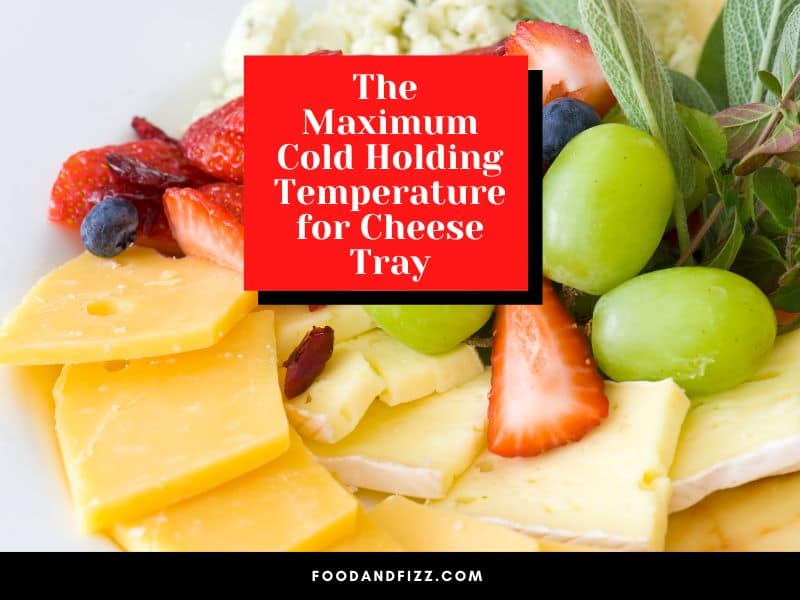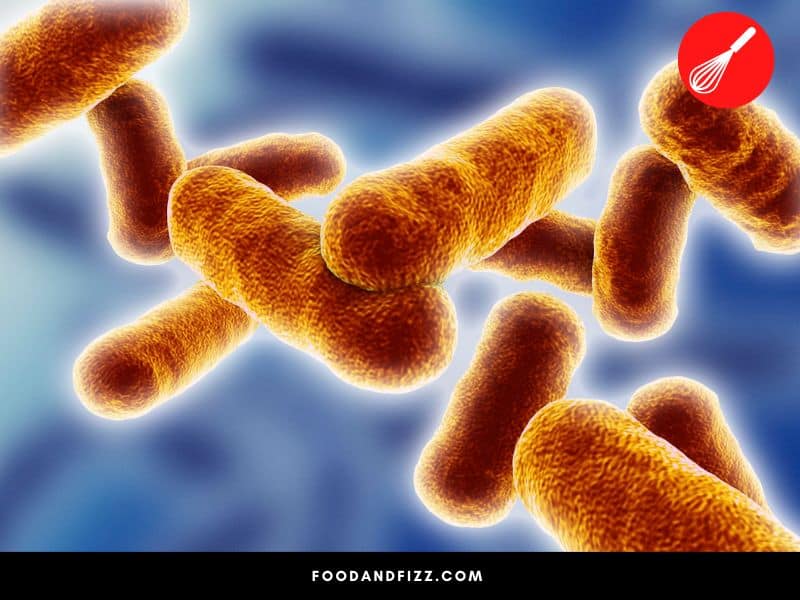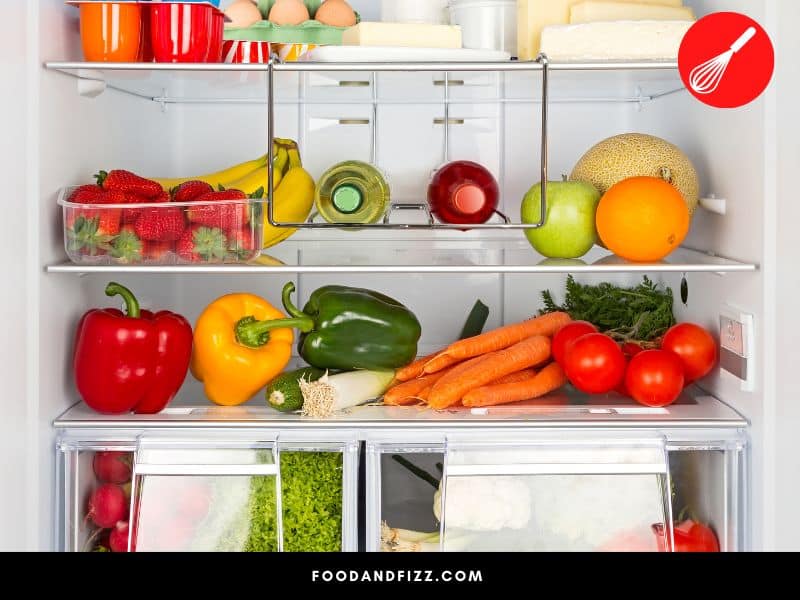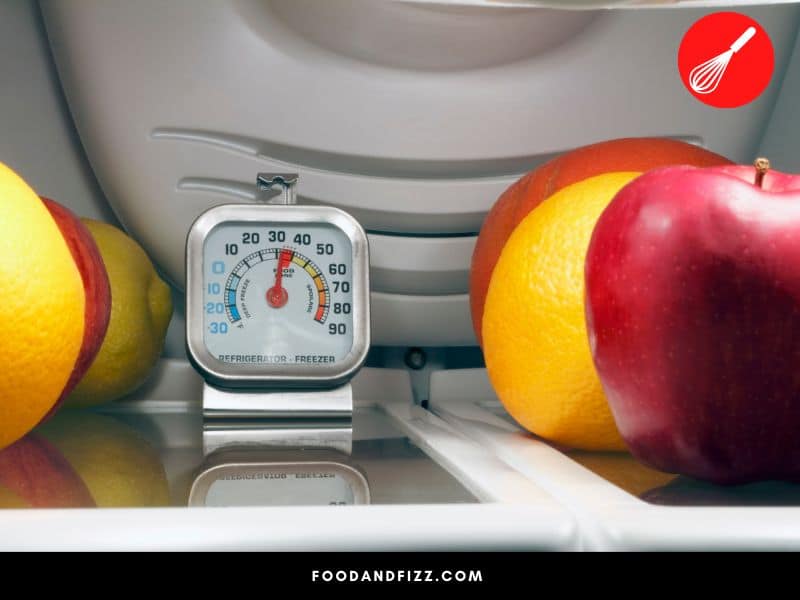Cheese, a TCS food item, is a cold food that can rot pretty quickly if not taken care of. Unless you want rotten cheese (which I really hope you don’t), keeping the cheese at the right temperature is crucial.
Keeping cheese cold inhibits the growth of bacteria which can spoil your food. At a certain temperature, the growth of these bacteria is hindered the most – thus, keeping your food safe.
The Maximum Cold Holding Temperature For Cheese Tray
The maximum cold holding temperature for a cheese tray is 40°F. The lower you keep the temperature, the lower the chances of your cheese being spoiled.

Look, I don’t want you to leave just knowing this figure. I want you to fully understand WHY this figure. The following sections cover exactly that.
Why Does Food Rot in the First Place?
It’s a known fact that food rots at high temperatures, but what exactly is it that rots the food, and how does lowering the temperature help?
Microorganisms are found everywhere – from your skin to your bedsheet to your food. These microorganisms, especially bacteria, start feeding on your food. This is what is commonly known as the “rotting” of food.
The greater the number of these microorganisms, the quicker your food will rot. Though a number of microorganisms are found, the most important ones are
- Salmonella
- Staphylococci
- Saprophytic flora
Salmonella is quite an important bacteria, and I’ve covered in some of my other articles how it can lead to food poisoning.
The first two, however, aren’t responsible for the rotting. The spoilage bacteria is actually Saprophytic flora. Freezing puts this bacteria into hibernation and reduces its growth – practically stopping it from growing.
Put short, food rots because microorganisms start feeding on the food, and these bacteria continue to multiply in the temperature danger zone.

How a Lower Temperature Prevents Cheese from Rotting
A lower temperature inhibits the growth of spoilage bacteria and stops many reactions in the cheese (or any other food items).
In cold temperatures, bacteria cannot synthesize enough enzymes to help them survive the cold. In a specific temperature range, known as the danger zone, the growth of spoilage bacteria is rapid, leading to the rotting of cheese fairly quickly.
When the cheese is thawed, the bacteria resume back to their work. This is why you can’t keep a frozen item on the shelf for an extended period. Thawed cheese is essentially the same as cheese that was never frozen, to begin with.
Quick freezing and thawing cycles can kill bacteria. However, the effect of this on most pathogens is not known.
Moisture also promotes the growth of these bacteria, which ultimately leads to cheese being rotten even quicker. This is why storing cheese in a dark, cold, and dry place is recommended.

What Is The Temperature Danger Zone?
The danger zone is the temperature range in which the growth of bacteria is extremely fast. Though higher temperatures facilitate bacterial growth, the growth retards after a certain point.
Temperatures between 40°F and 135°F are well inside the danger zone. Temperatures up to 140°F are also included in the danger zone.
For TCS food items, the bacterial growth in this range is just CRAZY. As I mentioned above, cheese is also a TCS food item and must be kept under controlled temperatures.

What Is TCS food?
TCS basically means Time and Temperature Control for Safety which was earlier called Potentially Hazardous Foods. These items need more attention and catering than other food items do.
Most dairy products and meat items are in this category. Cheese, being TCS in nature, needs to be preserved in low temperatures. Else, say bye to your tasty cheese!
How Long Can My Cheese Go Without a Refrigerator?
When a food item is taken out of the refrigerator, the bacteria that was put into hibernation gets back into action. For this reason, you can’t keep a refrigerated item on the shelf for relatively long periods.
How long you can keep your cheese (or other frozen time) over the shelf depends greatly on the temperature. If your apartment is centrally air-conditioned, it can easily go for about four to six hours.
However, if your apartment isn’t centrally air-conditioned and the temperature is pretty hot, consider using the cheese only within two hours of it being over the shelf.
A better (and safer) way would be to inspect and see yourself. Depending on the environment, your cheese may last less than two hours (seldom) or even more than six hours.
Under no circumstances should you keep cheese (and other frozen items) under the sun. Exposing such food items to sunlight can lead to photodegradation – a fancy name for discoloring and rotting of food.
Dependence of the Holding Temperature on the Area of the Cheese Tray
Though the holding temperature depends on the total area of your cheese, the impact isn’t enough for you to take this into account.
Unless you’re working on an industrial scale and dealing with extremely large quantities of cheese, you don’t have to worry about lowering your temperature because of the cheese being large in quantity.
But if you’re still curious, the cold handling temperature has an inverse relation with the area. The higher the area of cheese, the lower its temperature needs to be to prevent it from rotting.

Frequently Asked Questions to The Maximum Cold Holding Temperature for Cheese Tray
What Is the Minimum Hot Holding Temperature for Mac and Cheese?
The ideal hot holding temperature for mac and cheese is 165°F.
What is the Maximum Receiving Temperature for TCS Food Items?
The maximum holding temperature for TCS food items is 40°F, and the minimum hot temperature is 135°F
Conclusion to The Maximum Cold Holding Temperature for Cheese Tray
The maximum holding temperature for a cheese tray is 40°F. Keeping cheese below this temperature hinders the growth of spoilage bacteria which leads to food spoilage.
After the cheese is taken out of the refrigerator, make sure to put it back in as soon as you’re done. Frozen food, when taken out, rots almost as quickly as unfrozen food.

